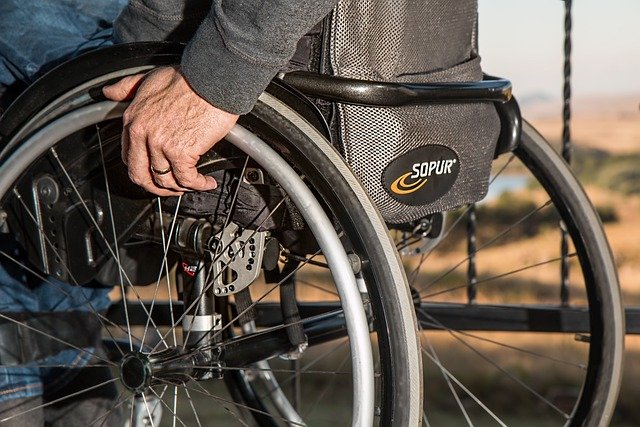Custom Mobility Solutions for Mom: Enhancing Independence in the UK
Finding the perfect Mobility Solutions for Mom is essential for maintaining her quality of life and autonomy in the UK. This objective analysis provides an overview of personalized aids, focusing on models that are practical for navigating British pavements and public transport, alongside exploring funding options available through local councils or the Motability Scheme for families seeking tailored devices

Mobility scooters have become essential tools for maintaining independence and quality of life for many individuals across the UK. For families seeking to support their mothers or other relatives with mobility challenges, selecting the right scooter involves understanding various factors including design features, legal requirements, funding options, and practical considerations for daily use.
Evaluating Essential Design Features Based on User Lifestyle
When selecting a mobility scooter, the user’s daily routine and lifestyle should guide the decision. Consider whether the scooter will be used primarily indoors, outdoors, or both. Indoor models typically feature compact designs with tight turning circles, making them suitable for navigating narrow hallways and doorways. Outdoor models offer larger wheels, enhanced suspension, and greater ground clearance for uneven surfaces.
Seat comfort is paramount, especially for extended use. Look for adjustable seats with adequate cushioning, armrests, and back support. Swivel seats can make transfers easier, while adjustable tiller positions accommodate different heights and reach preferences. Battery range is another critical factor—assess typical journey distances to ensure the scooter can complete daily activities without frequent recharging. Weight capacity should also match the user’s needs, with most scooters supporting between 100kg and 160kg.
Understanding UK Regulations for Pavement and Road Use
The UK categorizes mobility scooters into two main classes, each with distinct legal requirements. Class 2 scooters are designed for pavement use and have a maximum speed of 4mph. These vehicles do not require registration, insurance, or a driving license, making them accessible options for many users. They are restricted to pavements and pedestrian areas, and must not be used on roads except when crossing.
Class 3 scooters can travel up to 8mph and are permitted on roads as well as pavements. However, when on pavements, they must not exceed 4mph. Class 3 scooters require registration with the Driver and Vehicle Licensing Agency, though there is no fee. While insurance is not legally required, it is strongly recommended for liability coverage. Users must be at least 14 years old, and while a driving license is not mandatory, understanding road rules is essential for safe operation.
Accessing Government Support and Motability Scheme Funding
Several funding options exist to help make mobility scooters more accessible. The Motability Scheme is available to individuals receiving the Higher Rate Mobility Component of Disability Living Allowance, the Enhanced Rate of the Mobility Component of Personal Independence Payment, Armed Forces Independence Payment, or War Pensioners’ Mobility Supplement. Through this scheme, eligible individuals can use their mobility allowance to lease a scooter, with maintenance and insurance often included.
Local authorities may provide support through social services assessments, potentially offering grants or loans for mobility equipment. Some charitable organizations also offer assistance, particularly for individuals with specific conditions or circumstances. NHS wheelchair services occasionally provide powered mobility devices for those who meet clinical criteria, though availability varies by region. It is advisable to contact local social services or disability organizations to explore all available options.
Selecting Transportable and Easy-to-Store Models for UK Homes
For many UK households, storage space is limited, making portability a key consideration. Boot scooters or travel scooters are designed to disassemble into manageable sections, typically weighing between 10kg and 25kg per piece. These models can fit into car boots, making them ideal for families who want to transport the scooter for outings or holidays.
Folding scooters offer another space-saving solution, collapsing with minimal effort for storage in cupboards, hallways, or vehicle boots. When evaluating storage requirements, measure available space carefully, considering both the scooter’s footprint and clearance needed for maneuvering. Some models feature removable batteries, which can be charged separately indoors, eliminating the need to bring the entire scooter inside. Weight is also important—lighter models are easier to lift and maneuver, particularly when disassembling or loading into vehicles.
Comparing Safety Features for Independent Use and Peace of Mind
Safety features significantly impact user confidence and independence. Anti-tip wheels or stabilizers prevent the scooter from tipping on slopes or uneven ground. Effective braking systems, including electromagnetic or disc brakes, ensure reliable stopping power. Many models feature automatic braking when the throttle is released, adding an extra layer of security.
Lighting is essential for visibility, particularly during darker months. Look for scooters with front and rear lights, indicators, and reflectors. Some models include hazard lights for added safety. Suspension systems improve ride comfort and stability, especially on uneven surfaces. A horn or audible warning device helps alert pedestrians and other road users. Consider models with adjustable speed settings, allowing users to limit maximum speed in crowded or challenging environments. Visibility enhancements such as bright colors or reflective strips also contribute to safety.
Conclusion
Selecting a mobility scooter requires balancing practical considerations with regulatory requirements and individual needs. By evaluating design features against daily lifestyle, understanding the legal distinctions between Class 2 and Class 3 scooters, exploring available funding through schemes like Motability, prioritizing portability for UK living spaces, and focusing on comprehensive safety features, families can identify solutions that genuinely enhance independence. Taking time to research, test different models, and consult with healthcare professionals or mobility specialists ensures the chosen scooter provides reliable support and peace of mind for years to come.




